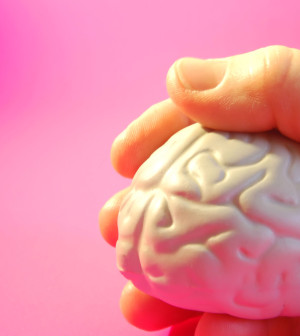- Skip Storing This Everyday Product in the Fridge Door
- Green Tea + B3 Pairing May Boost Brain Health
- Navigating Your Midlife Crisis: Embracing New Possibilities
- City Raccoons Showing Signs of Domestication
- Mapping the Exposome: Science Broadens Focus to Environmental Disease Triggers
- One Week Less on Social Media Linked to Better Mental Health
- Your Brain Changes in Stages as You Age, Study Finds
- Some Suicide Victims Show No Typical Warning Signs, Study Finds
- ByHeart Formula Faces Lawsuits After Babies Sickened With Botulism
- Switch to Vegan Diet Could Cut Your Greenhouse Gas Emissions in Half
Cholesterol-Lowering Drugs May Help After Certain Strokes


People using cholesterol-lowering drugs while in the hospital for a hemorrhagic stroke — which causes bleeding in the brain — were more than four times more likely to survive than people who weren’t taking the drugs, according to a new study.
People taking the commonly used drugs known as statins were also 2.5 times more likely to be discharged home or to a rehabilitation facility, the study reports.
When it comes to the best treatment for hemorrhagic stroke, there hasn’t been a standard treatment recommendation, according to the study’s lead author, Dr. Alexander Flint, the medical director of neuroscience quality at Kaiser Permanente in Redwood City, Calif. Now, he said, physicians should know that taking patients off statin treatment in the hospital “may carry a risk of substantially worse outcome.”
The findings from this study aren’t considered definitive because it wasn’t designed to prove that the statin treatment directly caused the lower risk of death.
There are two types of stroke — ischemic and hemorrhagic, according to the National Institute of Neurological Disorders and Stroke. Ischemic strokes are caused by a blockage in a blood vessel in the brain. A hemorrhagic stroke is caused by bleeding from a blood vessel in the brain.
According to Flint, hemorrhagic strokes are less common, comprising about 15 to 20 percent of all strokes. But, hemorrhagic strokes are often more damaging — as many as 40 percent of people who have a hemorrhagic stroke die within a month, he said.
Previous research has shown that cholesterol-busting statin drugs help after ischemic strokes, Flint said. But, he added, there have been conflicting findings about statin use in hemorrhagic strokes. The goal of this study was to help shed light on the best approach for those patients.
The study authors examined the medical records of almost 3,500 people treated for hemorrhagic strokes at 20 Kaiser Permanente hospitals in Northern California over a decade.
The researchers found that those who took statins in the hospital were much more likely to be alive after 30 days and more likely to leave the hospital for home or a rehabilitation facility.
The researchers also found that when people who had been taking statins prior to their hemorrhagic stroke were taken off statins in the hospital, their odds of dying increased by 84 percent, according to the study.
The study didn’t look at side effects or the price of the drugs. Flint said the statins in the study typically were inexpensive generic medications.
It’s not clear how statins may be so helpful to stroke patients. “It’s unlikely that the cholesterol-lowering effects of the statins are responsible, if only because they simply aren’t fast enough to explain better outcomes like discharge to home,” Flint said.
The gold standard in this type of medical research would be to randomly assign patients to statin treatment or no statin treatment and then watch what happens. Whether that kind of study is necessary here “will depend on how the stroke community weighs this level of evidence and how they translates it into practice,” Flint said.
For now, “the jury is still out in terms of what is best,” said Dr. Neil Stone, professor of medicine and preventive medicine at Northwestern University Feinberg School of Medicine in Chicago. “This needs to be followed up with some additional studies.”
Still, the study findings “at least may guide doctors in the hospital,” he said.
The study appears in the Sept. 22 issue of JAMA Neurology.
More information
For more about stroke, go to the U.S. National Institute of Neurological Disorders and Stroke.
Source: HealthDay
Copyright © 2025 HealthDay. All rights reserved.










